Table of Contents
The Ghanaian flag, also known as the flag of Ghana, holds a significant place in the nation’s history and culture. With its vibrant colors and meaningful symbolism, it represents the Ghanaian identity and heritage. In this article, we will delve into the intriguing aspects of the Ghana flag, its design, historical background, and the symbolism behind its elements.
The Ghana flag features three horizontal stripes of red, yellow, and green with a black five-pointed star at the center of the yellow stripe. The red color symbolizes the blood shed for independence, the yellow represents the mineral wealth, while the green stands for the lush forests and natural wealth. The black star represents freedom and African freedom.
Ghana Flag: Colors and Symbolism
- The flag of Ghana features three horizontal stripes of red, yellow, and green with a black five-pointed star at the center of the yellow stripe.
- The red color symbolizes the blood shed for independence and the sacrifices made by the Ghanaian people.
- The yellow color represents the country’s mineral wealth.
- The green color stands for the lush forests and the natural wealth of Ghana.
- The black star holds historical and cultural significance, representing freedom and African freedom.
- The flag’s design reflects the nation’s aspirations, cultural heritage, and unity among the Ghanaian people.
Flag of Ghana
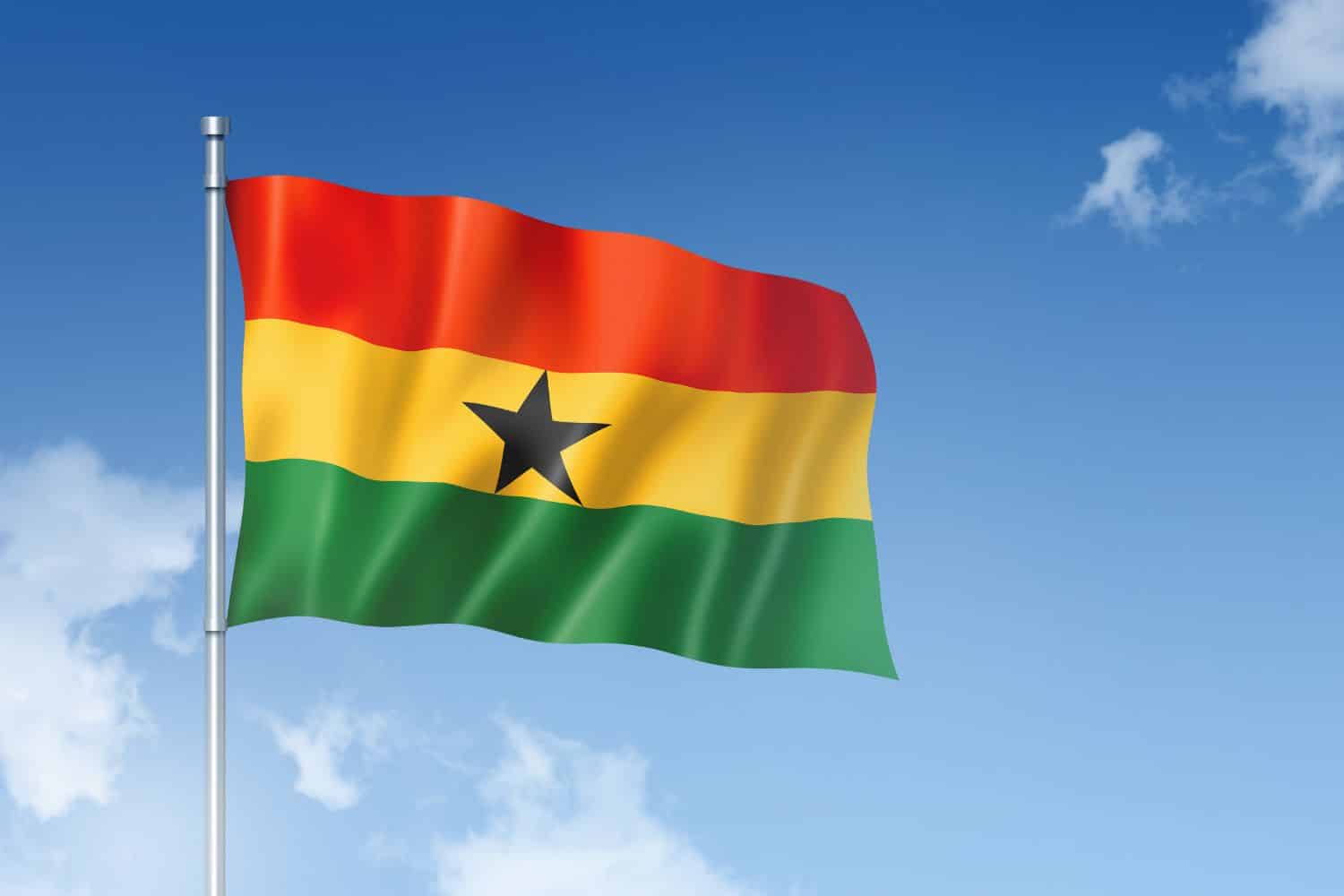
The flag stands as a powerful symbol that encapsulates the cultural significance and spirit of the nation. Its design consists of three horizontal stripes of red, yellow, and green with a black five-pointed star at the center of the yellow stripe. The red color symbolizes the blood shed for independence, honoring the sacrifices made by the Ghanaian people throughout history. The yellow color signifies the mineral wealth, while the green stands for the lush forests and natural resources. The black star represents freedom and the idea of African freedom.
The history of the flag is intertwined with Ghana’s rich heritage and struggle for independence. Adopted on March 6, 1957, the flag represents the unity and aspirations of the Ghanaian people.
Beyond its aesthetics, the flag from Ghana carries deep symbolic meanings. The colors reflect the values and aspirations of the Ghanaian people, symbolizing sacrifice, wealth, and freedom. The black star represents African freedom, a symbol with historical and cultural significance in Ghanaian tradition. It embodies Ghana’s cultural heritage and serves as a reminder of the nation’s resilience and unity.
National Flag Etiquette and Protocol
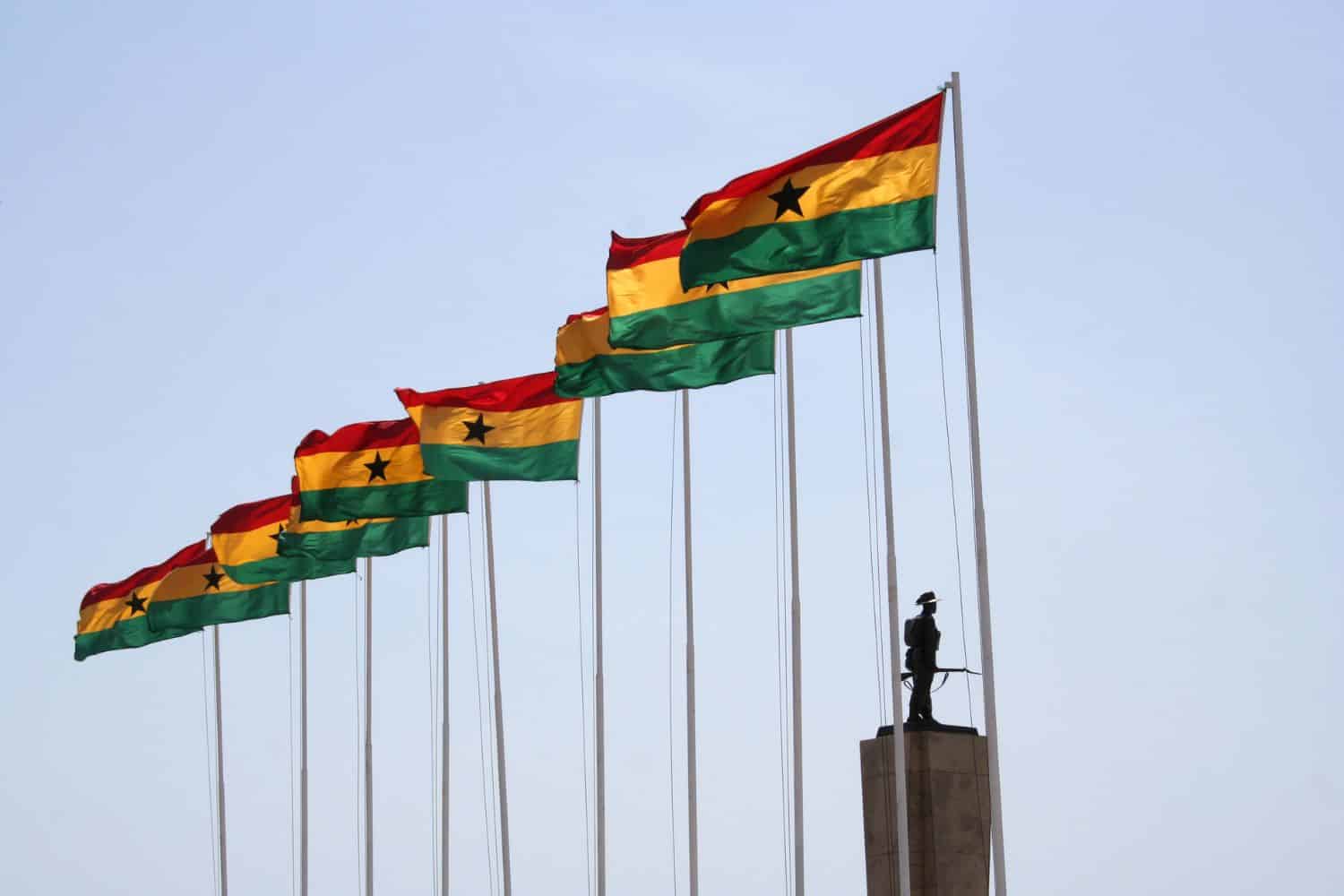
Respecting the proper usage and display of the Ghanaian flag is of utmost importance. Understanding flag etiquette is essential, especially during national events and ceremonies. Learn about the protocols governing the handling, hoisting, and lowering of the flag. Discover the appropriate procedures for retiring or handling damaged flags, ensuring they are accorded the respect they deserve.
- Proper Handling: The Ghanaian flag should be handled with care and respect, ensuring it is not allowed to touch the ground or floor. It should be held upright and not dragged.
- Hoisting and Lowering: When hoisting the flag, it should be raised briskly and lowered ceremoniously. It is customary to hoist the flag at sunrise and lower it at sunset, although this may vary depending on the occasion or specific guidelines.
- Displaying the Flag: The Ghanaian flag should be displayed with the red, yellow, and green horizontal stripes in that order from top to bottom with the black star centered in the yellow stripe. It should be flown freely and not entangled or obstructed.
- Half-Staff: Lowering the flag to half-staff is a gesture of mourning or respect. This should be done on specific days of remembrance or when directed by authorities to honor national tragedies or the passing of significant figures.
- Flag Retirement: When a Ghanaian flag becomes damaged, torn, or worn out, it should be retired in a dignified manner. This can involve burning it in a respectful and solemn ceremony, following appropriate guidelines and local regulations.
- Flag Size and Placement: The size of the Ghanaian flag displayed should be proportionate to the size of the flagpole or display area. It is recommended to consult local guidelines or authorities for specific rules regarding flag size and placement.
- Respectful Disposal: If a flag cannot be retired through burning, it should be disposed of in a respectful manner. This can involve burying it or handing it over to authorized organizations that specialize in flag disposal.
Interesting Facts and Trivia
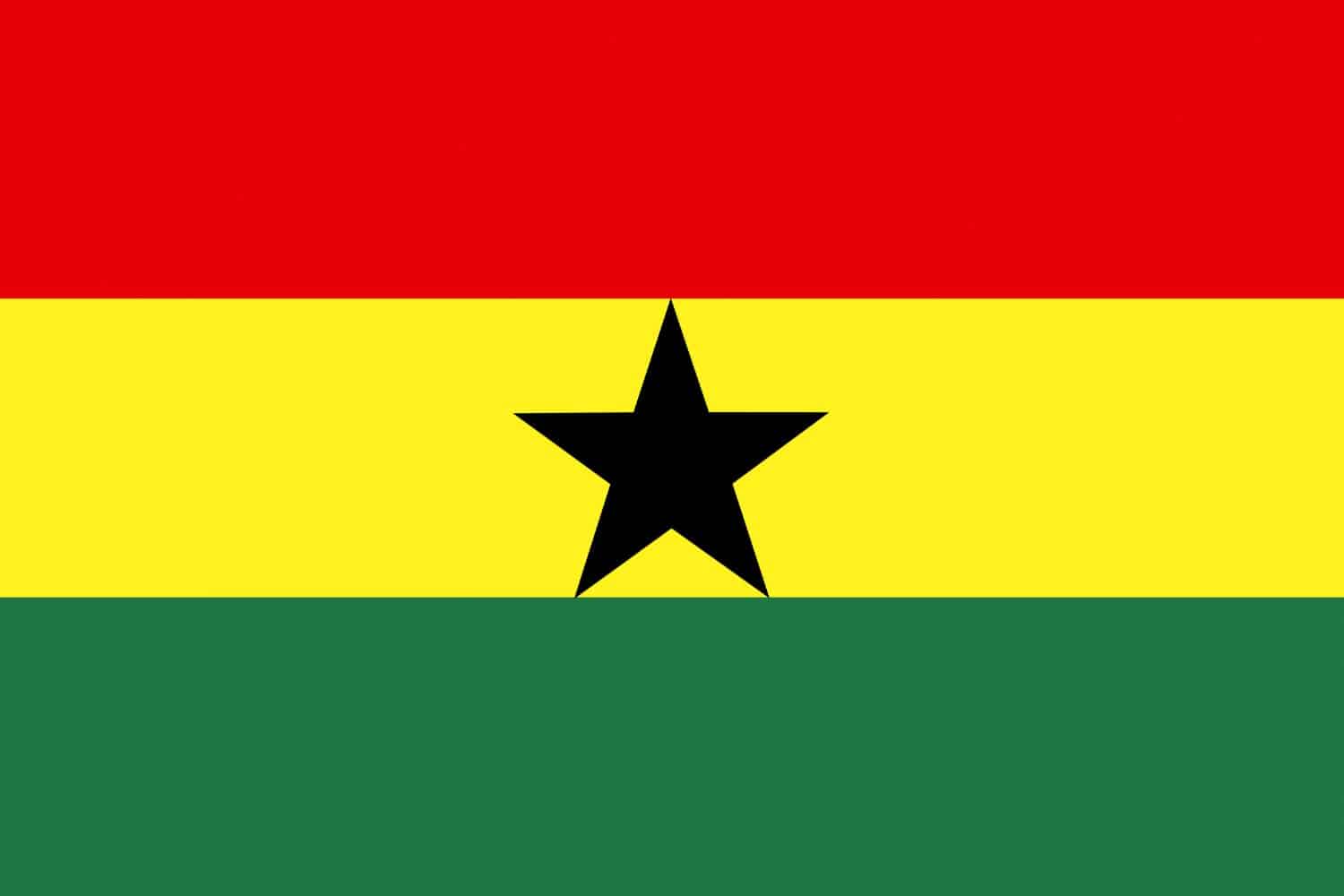
Embark on a journey of fascinating facts and lesser-known trivia about the Ghanaian flag. Discover unique features within the flag’s design that hold hidden symbolism. Uncover stories of famous incidents or events involving the flag that have left an indelible mark on the nation’s history and identity.
Rich Tapestry of History
- 1957: The current flag of Ghana is adopted on March 6, symbolizing the independence and aspirations of the Ghanaian people.
- Colors and Symbolism: The red color represents the blood shed for independence, the yellow symbolizes the mineral wealth, and the green stands for the rich forests and natural resources of Ghana. The black star in the center signifies African freedom.
- National Identity: The flag embodies Ghana’s rich history, cultural heritage, and the nation’s ongoing pursuit of unity, prosperity, and advancement.
Flag-Related Symbols and Emblems
A flag is not alone in representing the nation’s identity. Explore additional national symbols and emblems closely associated with Ghana, understanding their significance and how they relate to the flag. Delve into their historical and cultural roots, further enriching your understanding of Ghana’s heritage. It’s easy to travel and make a Ghana tour to visit the country’s best destinations.
Symbolisms of the Ghana Flag
The flag of Ghana holds several symbolic elements that represent the nation’s history, values, and aspirations. Here are the symbolisms of the Ghana flag presented in itemized form:
- Red Color: Represents the blood shed by those who fought for Ghana’s independence.
- Yellow Color: Symbolizes the wealth of the country’s minerals and natural resources.
- Green Color: Represents the lush vegetation and the rich forests of Ghana.
- Black Five-Pointed Star: Stands for freedom and the African freedom movement, emphasizing Ghana’s leadership role in the fight against colonialism.
- Flag’s Design: Reflects Ghana’s aspirations, cultural heritage, and unity among the Ghanaian people.
- National Identity: The flag serves as a powerful symbol that unifies the Ghanaian people, reminding them of their shared heritage and cultural identity.
- National Aspirations: Through its design and elements, the flag embodies the aspirations and values of the Ghanaian nation, including freedom, wealth, unity, and environmental richness.
These symbolisms in the flag contribute to the country’s sense of identity and pride, reflecting its historical journey and cultural significance.
Flags of Similar Countries or Regions
Examining the flags of neighboring countries or regions can provide intriguing insights. Compare and contrast the flags, exploring similarities in design, colors, or symbolism. Uncover historical and cultural connections between flags, shedding light on shared influences or distinctive identities.
Ghanaian Flag vs Nigerian Flag
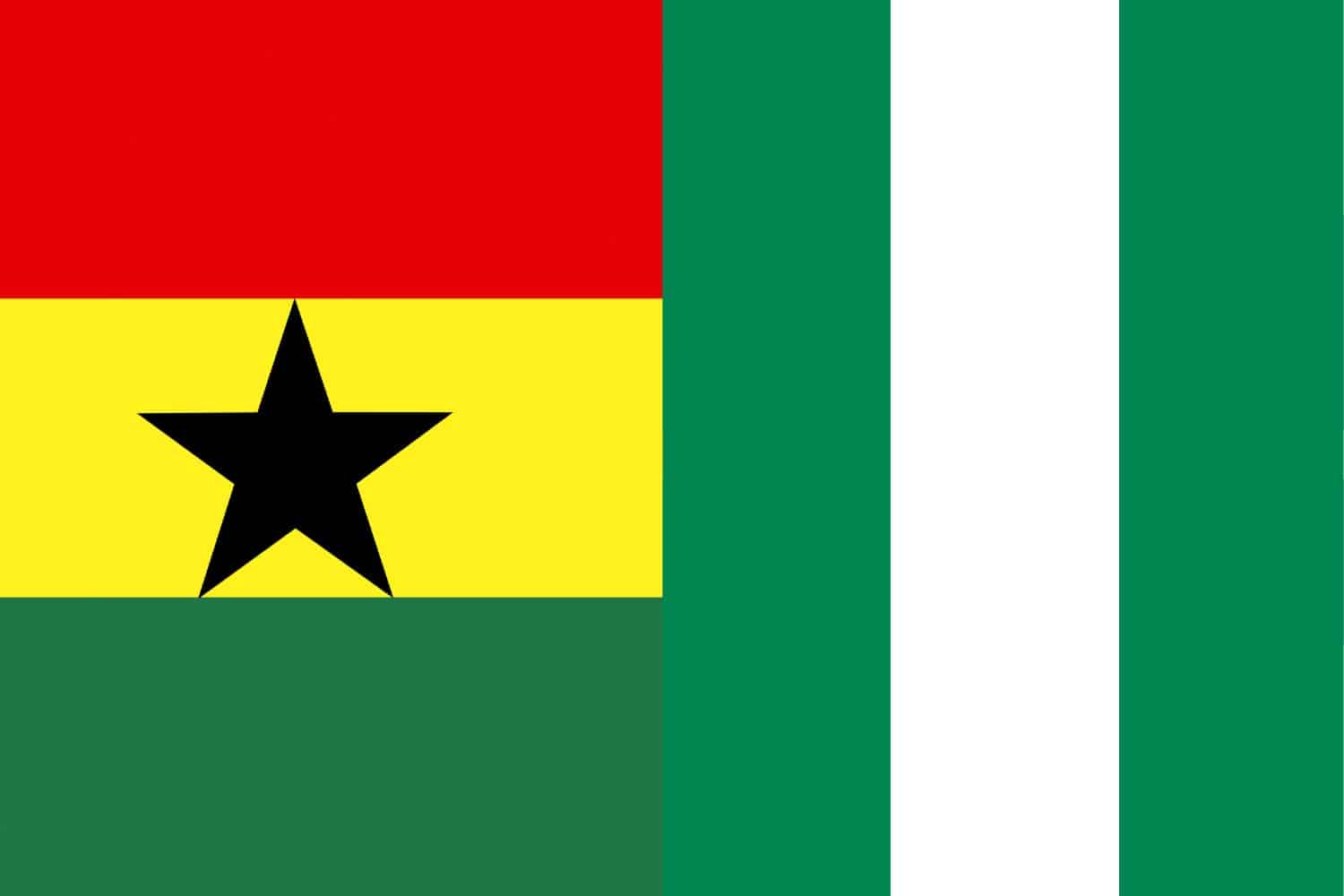
Similarity: Both flags feature a green field.
Difference: The Nigerian flag is a simple vertical tricolor of green, white, and green.
Ghanaian Flag vs Cote d’Ivoire Flag
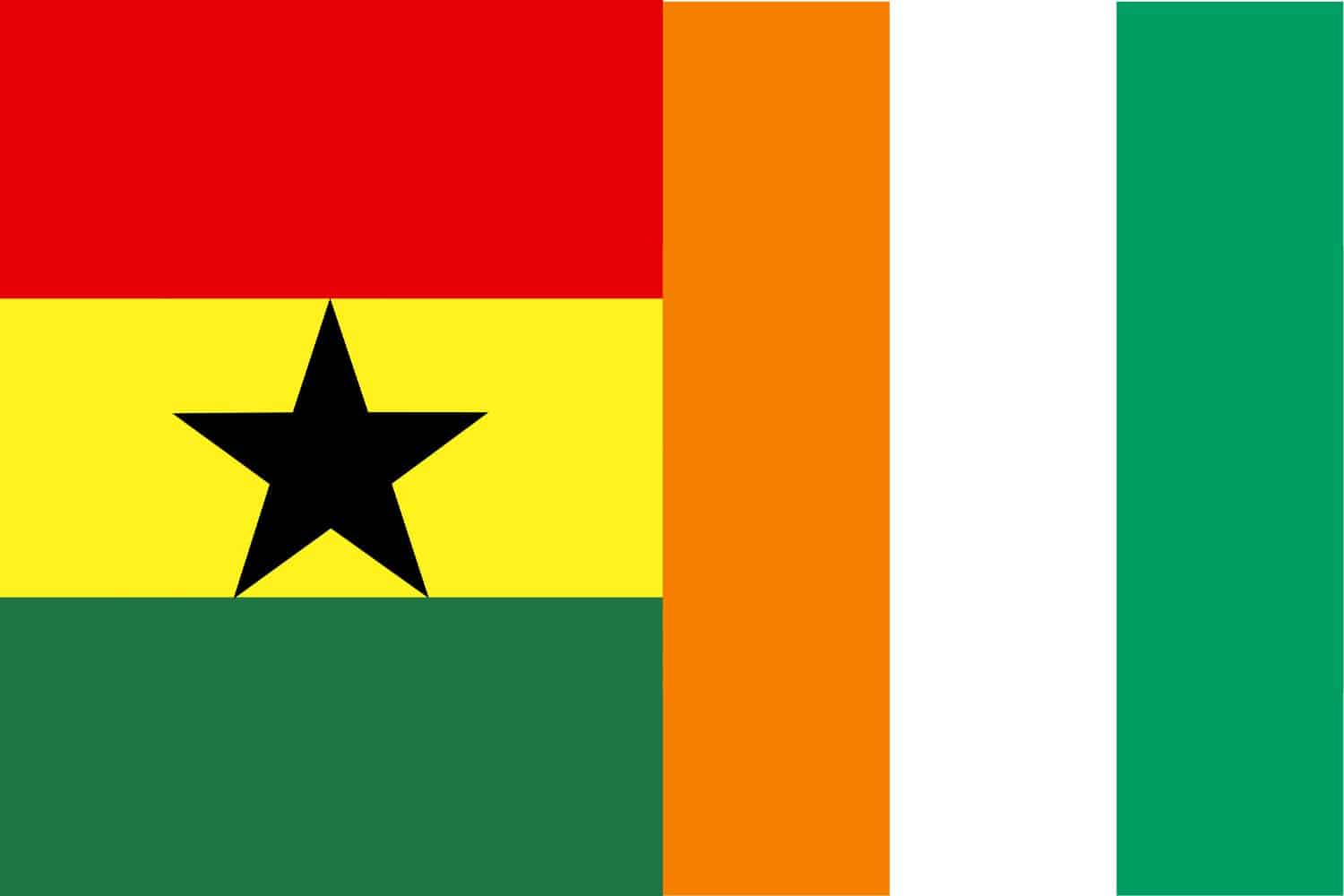
Similarity: Both flags have a vertical tricolor design.
Difference: The Cote d’Ivoire flag features the colors orange, white, and green from the hoist side to the fly side.
Ghanaian Flag vs Togolese Flag
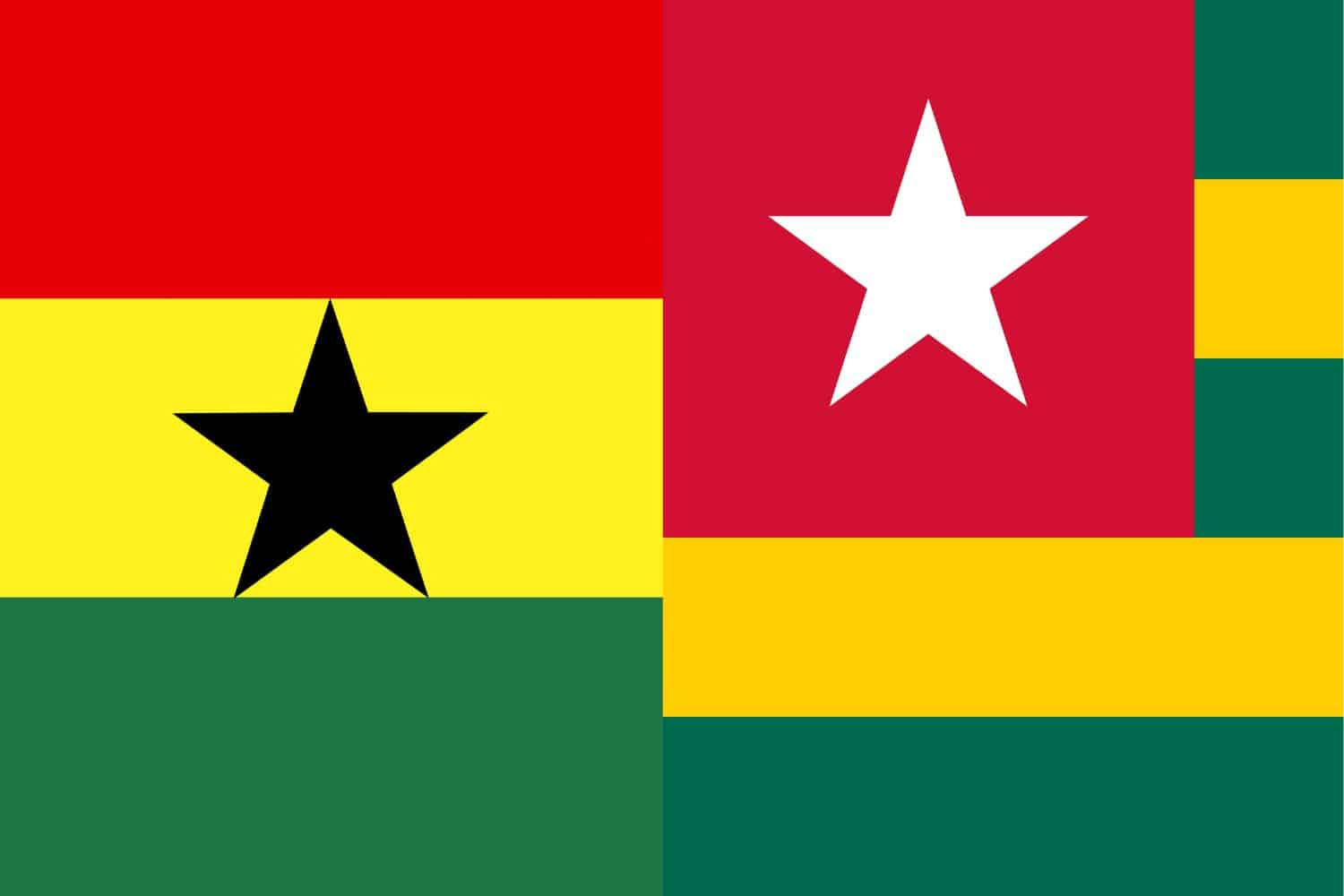
Similarity: Both flags feature the color green.
Difference: The Togolese flag has five alternating horizontal stripes of green and yellow, with a white five-pointed star in a red square in the upper hoist-side corner.
Ghanaian Flag vs Burkina Faso Flag
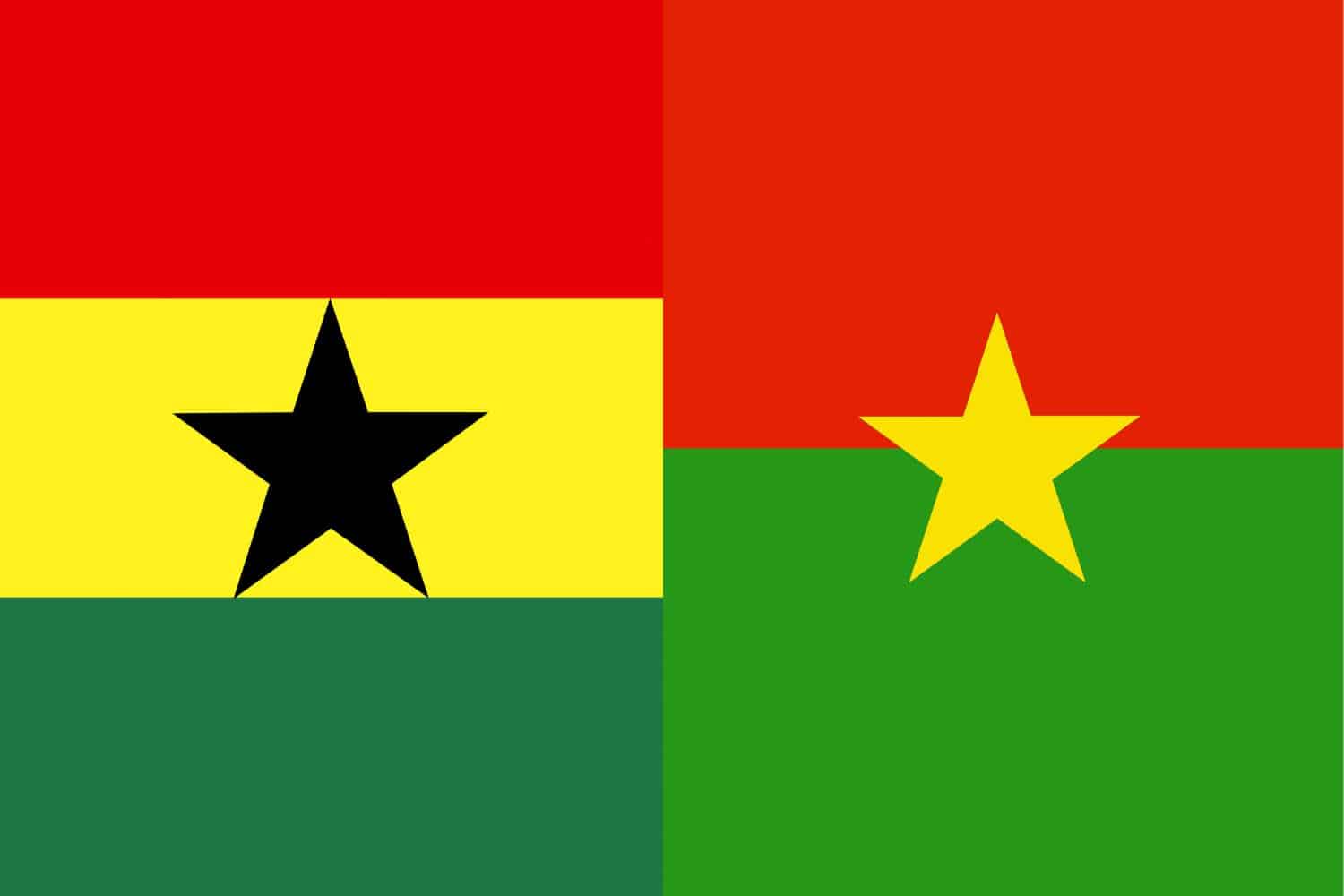
Similarity: Both flags have the colors green and yellow.
Difference: The Burkina Faso flag is divided horizontally with the top stripe being red and the bottom stripe being green, with a yellow five-pointed star in the center.
Ghanaian Flag vs Benin Flag
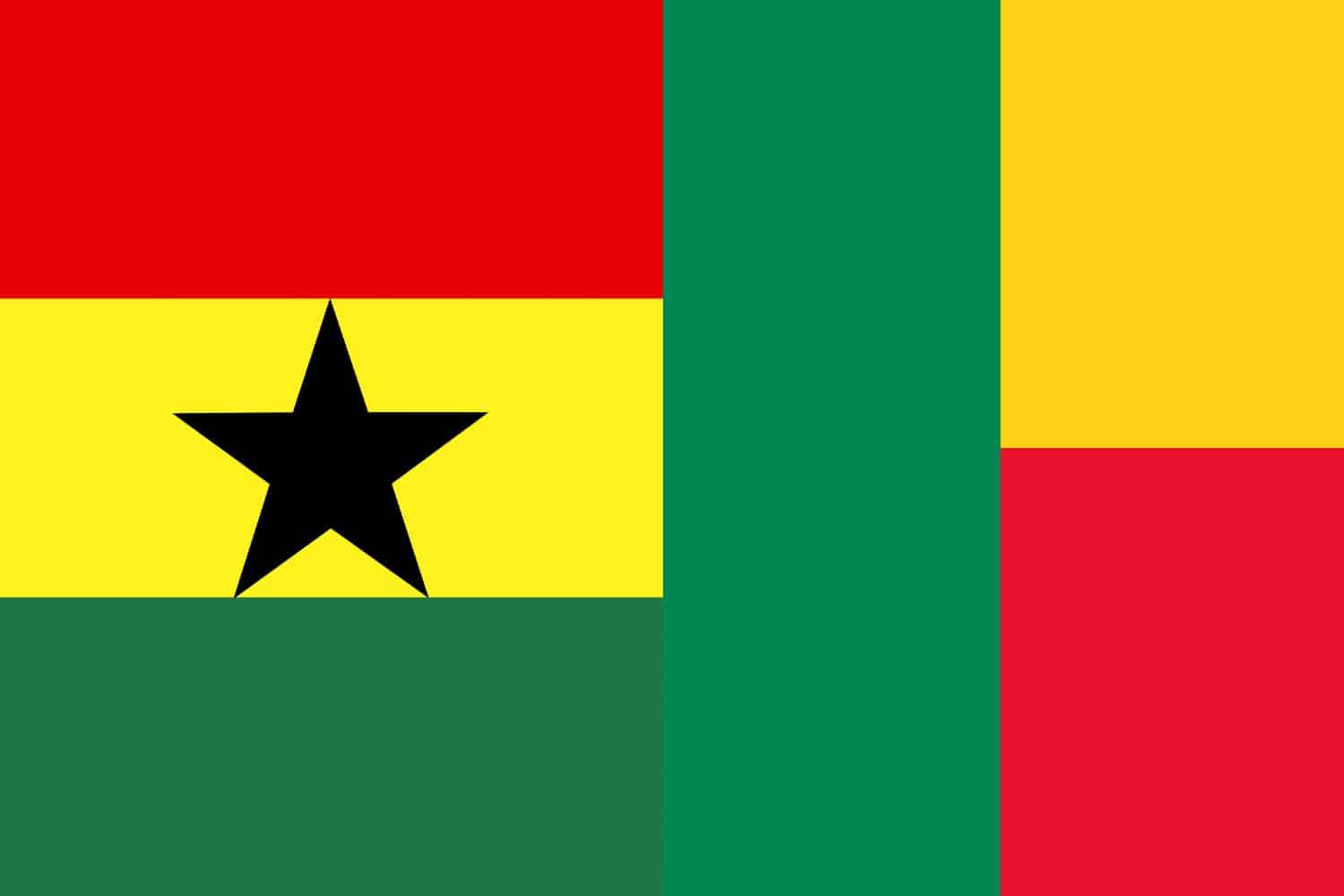
Similarity: Both flags use the color yellow.
Difference: The Benin flag is a vertical tricolor of green, yellow, and red from the hoist side to the fly side.
Ghanaian Flag vs Mali Flag
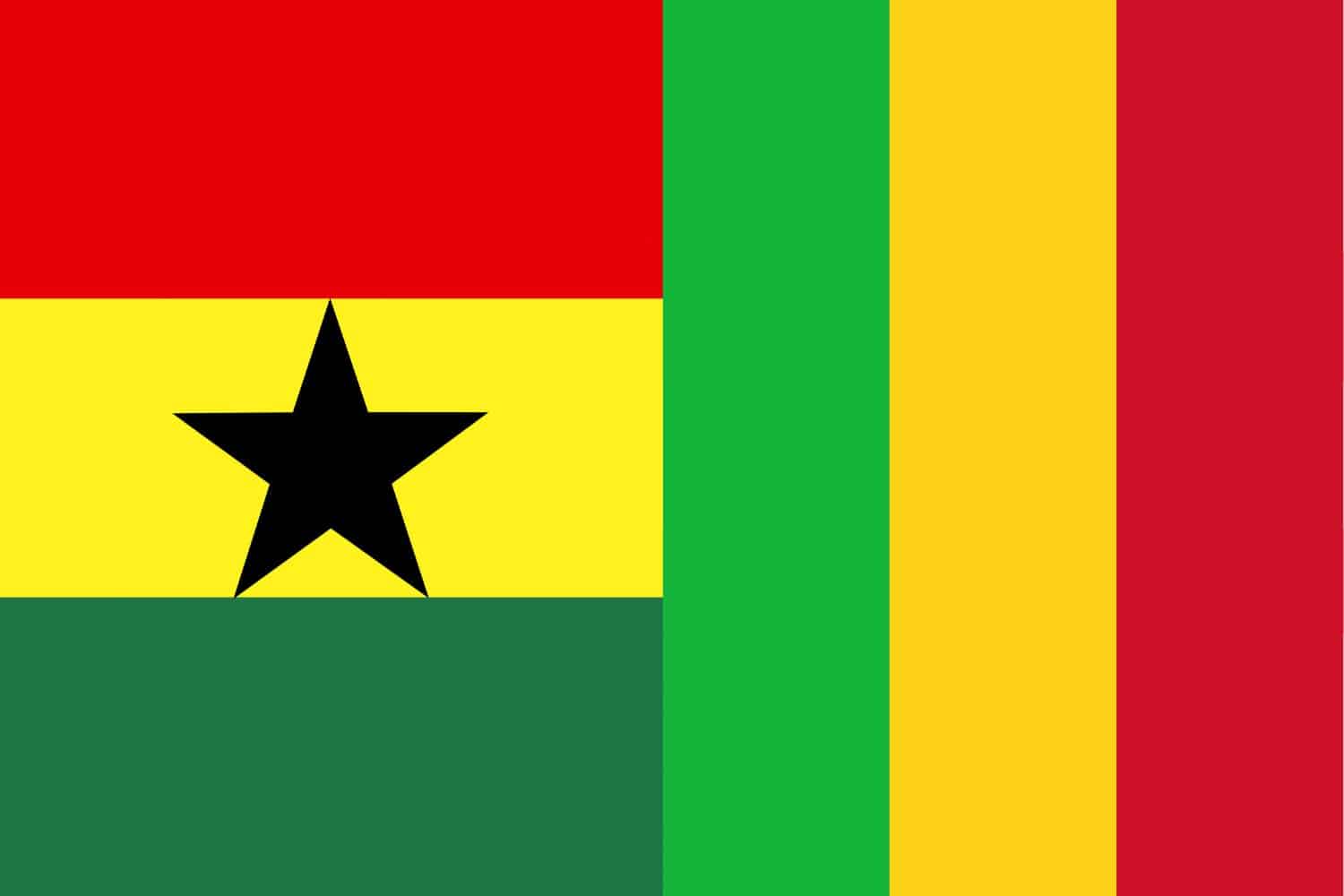
Similarity: Both flags use the colors green and yellow.
Difference: The Mali flag is a vertical tricolor of green, yellow, and red from the hoist side to the fly side.
Frequently Asked Questions (FAQs)
Discover answers to common questions related to the Ghana flag picture. From its historical origins to the symbolism behind its elements, find concise and informative responses that address inquiries commonly posed by those curious about Ghana’s flag.
When was the Ghanaian flag officially adopted?
The Ghanaian flag was officially adopted on March 6, 1957.
Who designed the Ghanaian flag?
The flag of Ghana was designed by Theodosia Salome Okoh.
What do the colors of the Ghanaian flag represent?
Red represents the blood shed for independence, yellow symbolizes the country’s mineral wealth and green stands for its lush vegetation and forests. The black five-pointed star in the center symbolizes freedom and African freedom.
Has the Ghanaian flag undergone any changes since its adoption?
Yes, the flag was altered in 1964 to replace the black star with a golden eagle but was reverted back to the original design with the black star in 1966.
Why does the flag feature a black star?
The black star is inspired by the Black Star Line, a shipping line incorporated by Pan-African leader Marcus Garvey. It symbolizes African freedom.
How is the Ghanaian flag similar to other African flags?
Many other African flags use the Pan-African colors (red, yellow, and green), though the symbolism can vary by country.
Is there a specific protocol for flying the Ghanaian flag?
Yes, like other national flags, the Ghanaian flag should be treated with respect and should not touch the ground or be used in a disrespectful manner.
How does the Ghanaian flag differ from the flag of Guinea?
Both flags use red, yellow, and green, but the Ghanaian flag has a horizontal design with a black star in the yellow stripe, while the Guinean flag uses vertical stripes without any emblem.
Is the Ghanaian flag used as a symbol in national events or ceremonies?
Yes, the flag is prominently displayed during national events, celebrations, and ceremonies to symbolize national pride and history.
Are there any local or national laws governing the use and display of the Ghanaian flag?
Yes, like many countries, Ghana has protocols regarding the use and display of its national flag to ensure it is treated with the necessary respect.
More About Ghana
[the-post-grid id=”50361″ title=”Ghana Main page”]
